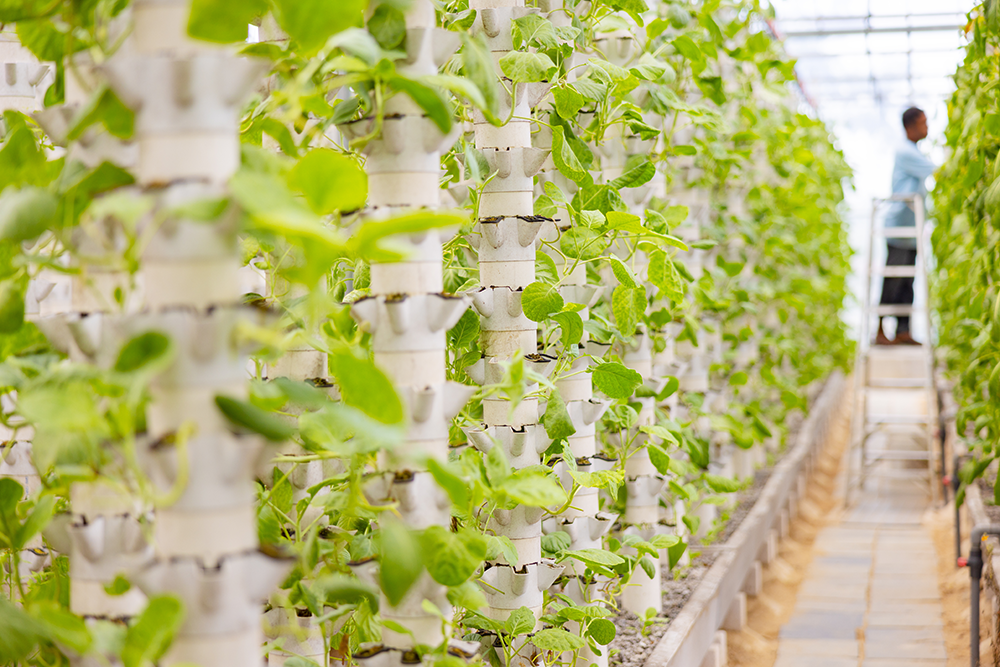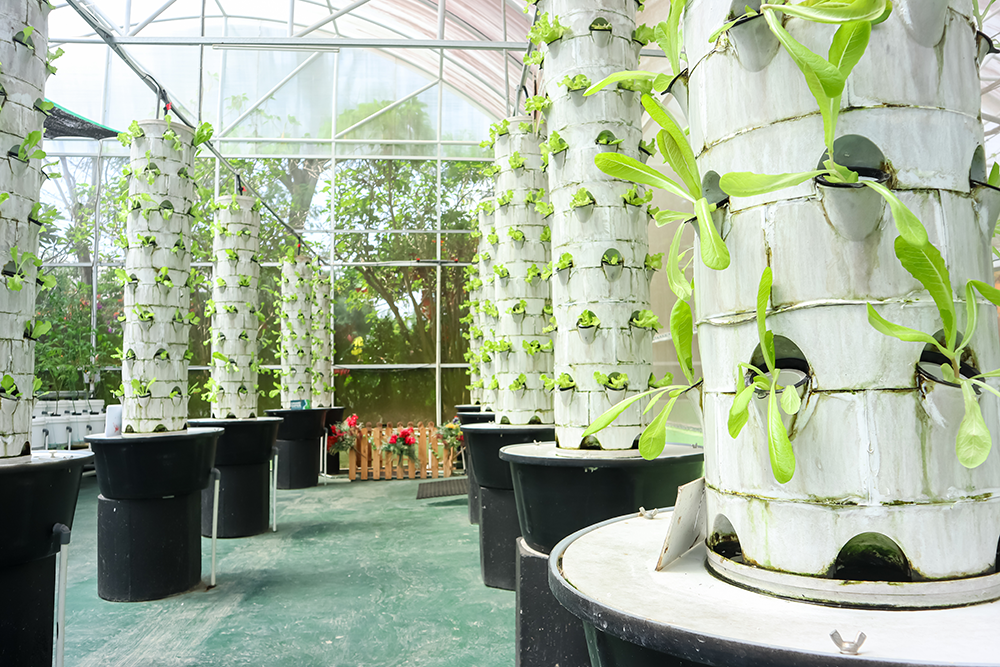Select Your Country/Region
Current Region:
 USA (EN)
USA (EN)
Choose a different country or region to see the content specific to your location
If you’re looking to grow plants at home or in a limited area, a hydroponics tower or tower garden is an excellent solution. These garden systems use vertical space efficiently and eliminate the need for soil.
Whether you’re new to hydroponics or a seasoned grower, understanding what crops work best in a hydroponics tower will help you get the most out of your setup. With proper care, including stable pH levels and controlled water levels, you can enjoy fresh produce, herbs, and even flowers all year long.

A hydroponic tower is a vertical garden system that uses nutrient-rich water to feed plants. Instead of soil, the plants sit in small containers or net cups, with roots exposed to the flowing water. A pump circulates the water from a reservoir at the bottom to the top of the tower, where it trickles down through the plants. As the water flows, it provides essential nutrients and moisture to each plant.
These systems are ideal for small spaces, like balconies, patios, or kitchens. They are also more water-efficient than traditional gardening because they recirculate water, reducing waste. With the right support structures, you can even grow fruits and vegetables that thrive in vertical setups.
A wide variety of plants grow well in hydroponic towers, from fast-growing greens to flavorful herbs and small fruits.
Here are the best crops to try:
Leafy greens are some of the easiest crops to grow in a hydroponics tower. These plants thrive in vertical systems because they don’t need deep root systems and grow quickly with minimal care.
Leafy greens are beginner-friendly and adapt well to minor pH fluctuations and changes in water levels.
Herbs grow exceptionally well in tower gardens, offering fresh flavors with minimal effort. They are a great option for anyone who enjoys cooking and wants easy access to culinary herbs.
With consistent water levels and regular harvesting, herbs will keep producing for months.
Though fruiting vegetables need more care than greens or herbs, they can thrive in hydroponic towers with the right setup. Proper lighting, pruning, and support structures help them grow vertically.
When growing fruiting vegetables, make sure the water levels remain stable, and keep pH levels between 5.5 and 6.5 for optimal growth.
Flowers aren’t just for soil gardens—they grow beautifully in hydroponic setups too! Adding flowers to your hydroponic garden enhances its look and can attract pollinators if placed outdoors.
Growing flowers makes your tower garden not only functional but also visually appealing.
Microgreens are nutrient-dense young plants harvested shortly after germination. They grow fast and require little space, making them ideal for small spaces and vertical gardens.
Since microgreens grow within 10-14 days, they are a perfect choice if you want quick harvests.

Levels Keeping the pH levels in the right range ensures healthy nutrient uptake. Use a pH meter to get accurate readings and adjust with pH up and pH down solutions if needed. Most crops grow best in a pH range between 5.5 and 6.5.
Stable water levels are essential for healthy roots. Low water levels can stress plants, while high levels can reduce oxygen availability. Top off the reservoir as needed to maintain consistent water flow.
Some fruiting vegetables, like tomatoes and peppers, need extra support to grow properly. Add stakes, trellises, or other support structures to help them grow vertically and stay stable.
If you grow indoors, ensure your plants receive adequate light by using LED grow lights. Position the lights evenly to cover the entire tower, encouraging uniform growth.
Prune plants to prevent overcrowding, especially in small spaces. Regular harvesting keeps herbs and greens producing new growth and prevents bolting.
A hydroponic tower offers several advantages over traditional soil-based gardening:
Using a Dosatron Hydroponic Dosing Pump simplifies nutrient management in your tower garden. These systems automate the delivery of nutrients, ensuring plants receive the right nutrients at the right time.
“I decided to grow strawberries and cherry tomatoes using a hydroponic tower, and the results have been incredible! With the Dosatron system handling nutrient dosing, I’ve seen faster growth and better fruit yields than I ever expected.
My strawberries are sweeter, and the tomatoes have that perfect juiciness, all without worrying about overfeeding or underfeeding my plants.
The combination of a vertical system and Dosatron has completely transformed my home garden into a fruit powerhouse!"
Pam
A hydroponics tower or tower garden is a great way to grow plants efficiently, even in small spaces. Whether you’re growing leafy greens, herbs, fruiting vegetables, or flowers, a hydroponic tower offers faster growth and less maintenance than traditional gardening.
With proper care—including maintaining stable pH levels and consistent water levels—you can enjoy healthy plants year-round.
Using Dosatron fertigation systems simplifies the process by automating nutrient delivery and pH management, giving your plants exactly what they need to thrive.